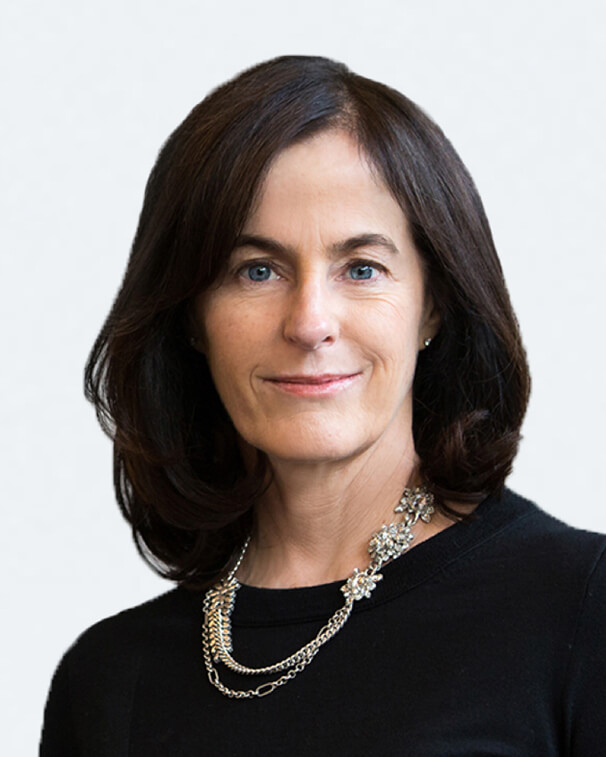
Listen now:
Deidre Paknad, WorkBoard CEO: Most organizations struggle with alignment and accountability, but it turns out those two levers — getting everyone aligned on the plan and driving a high degree of accountability in the organization — are the most powerful internal growth levers that you have.
We think of that as a spectrum of alignment: from "nobody is aligned" to "everyone's aligned" — and accountability: from "no one's accountable" to "everyone's accountable" for outcomes on the strategic plan.
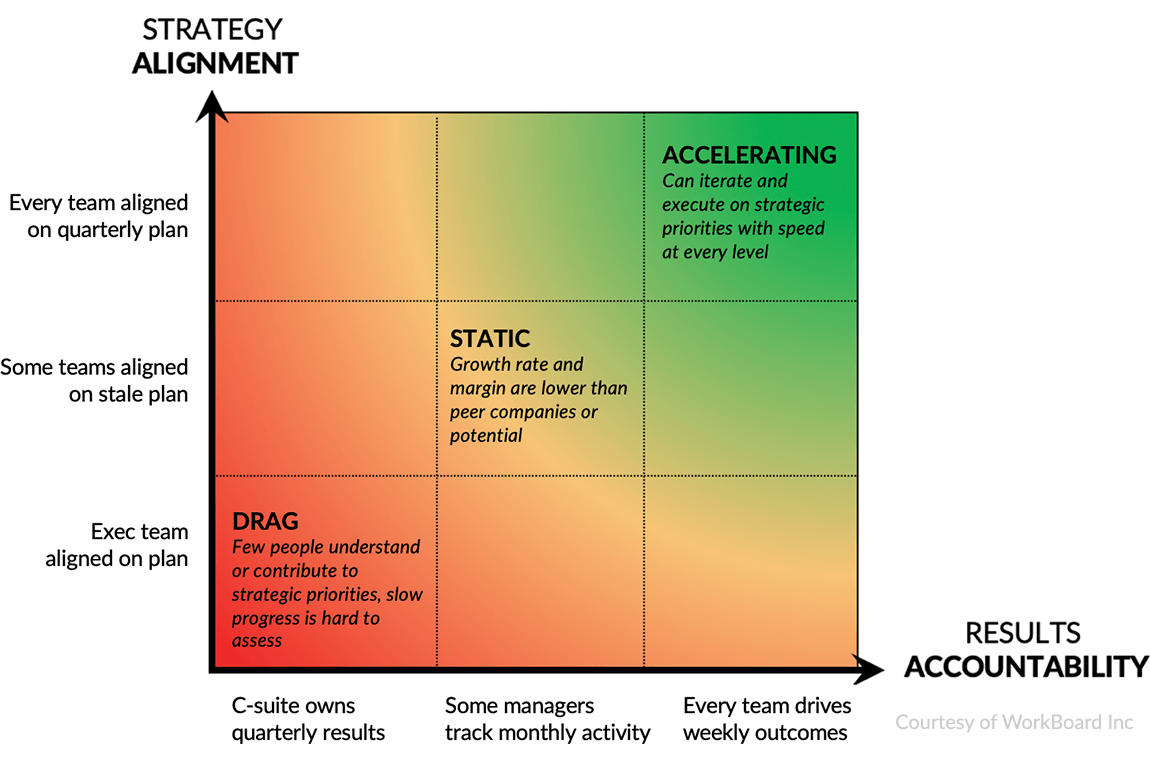
Now for lots of organizations, and particularly mature ones, what you find is: the leadership team is aligned on the strategic priorities and the leadership team is accountable for their outcomes — and usually those are financial outcomes at the end of the quarter. So you have low alignment and low accountability relative to how many people are in the organization.
This zone is a disadvantage and it creates an enormous amount of growth drag because not enough people understand how they contribute to the plan and not enough people are accountable for its outcomes.
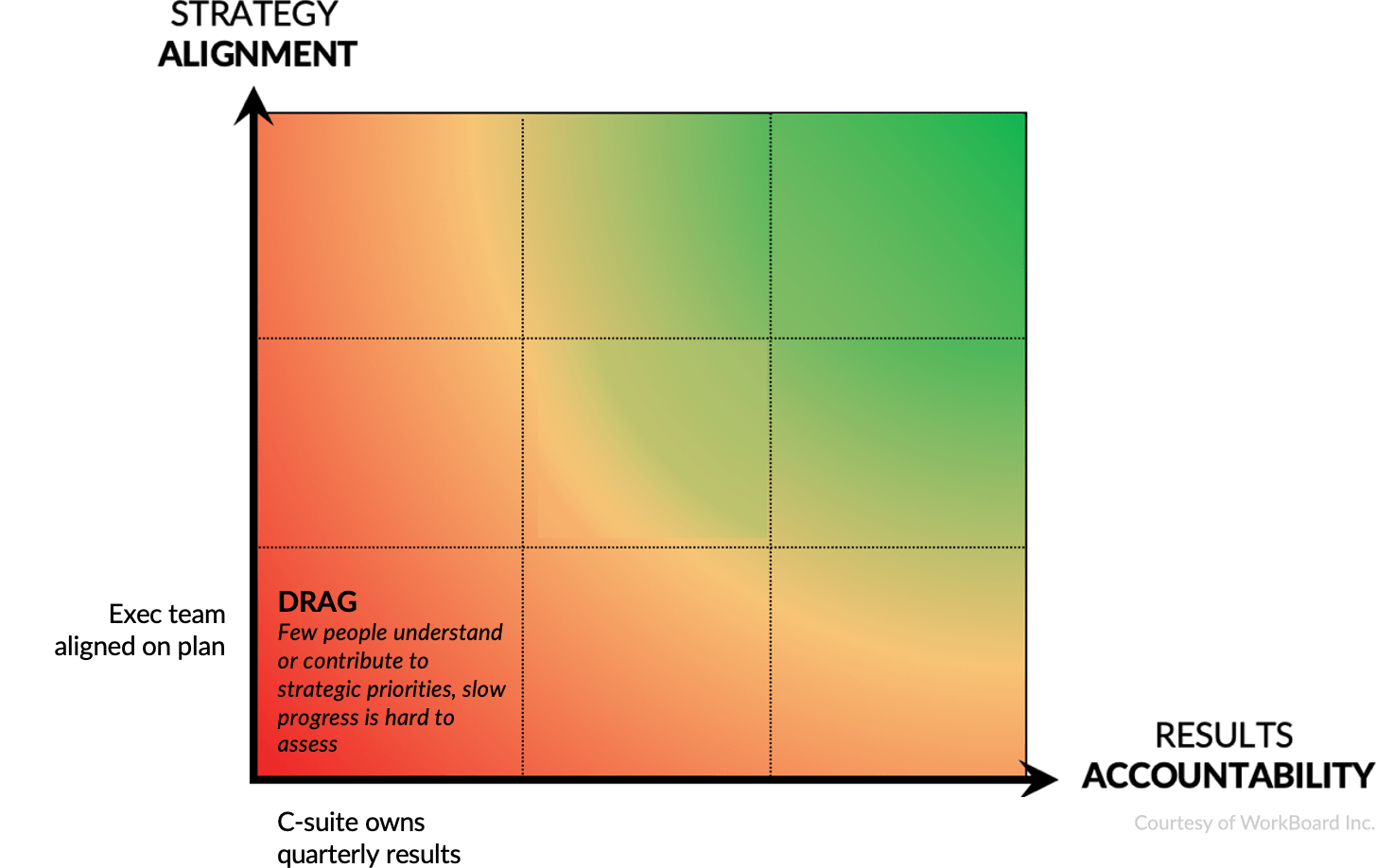
In some organizations you find that at L3 and L4, people want to contribute to the strategic priorities, but they don't quite understand what they are. Maybe they have a stale version of the plan, or the leadership team moved on to a new competitive response. At this level we sort of understand the plan, but we're a little behind on that. And what you typically find in that L3 / L4 zone is that there's a lot of reporting, monthly output or monthly activity. So we have a lot of activity that's only sort of aligned to the plan. A lot of motion, not a lot of impact.
This zone we think of as the static zone, a lot of effort, a lot of expense, not a lot of growth from that effort.
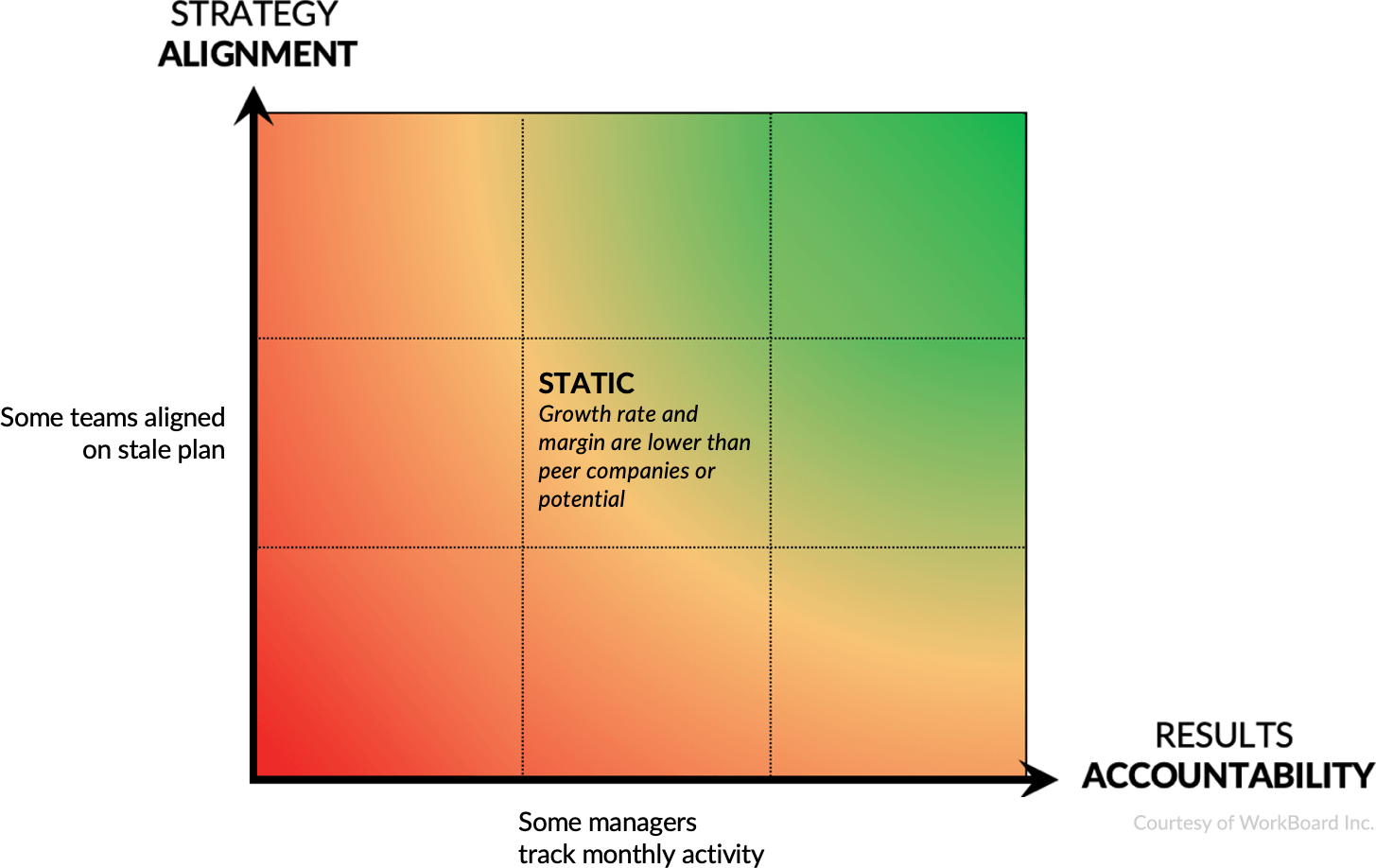
In the fastest growing organizations, we have weekly focus on key results that are aligned to the strategic priorities of the organization. And that is a growth advantage.
Now in the fastest growing organizations and those that are taking full advantage of techniques like OKRs, what you find is every team is aligned on quarterly OKRs.
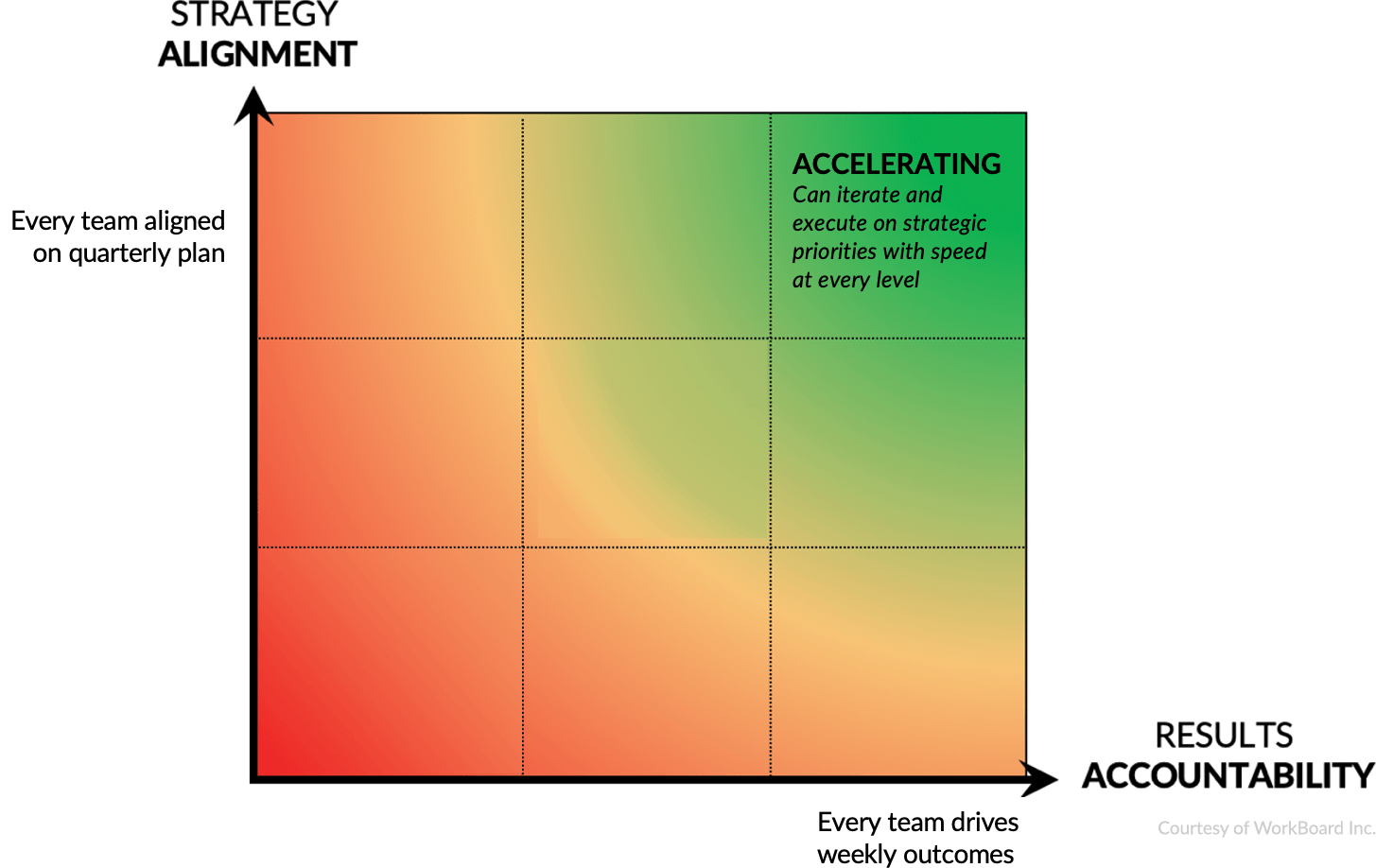
So the plan is real, it's accurate and it's right now. Everybody understands it, every team is aligned on it and every team is focused on the results they drive weekly — really the KRs and the OKR methodology. So we have weekly focus on key results that are aligned to the strategic priorities of the organization.

And that is a growth advantage. And the reason we call it a growth advantage here is it really creates a core organizational competency to quickly iterate on strategic priorities, activate those through the organization and rapidly drive results against them. That's a sustainable growth advantage that your organization can harvest as well.




